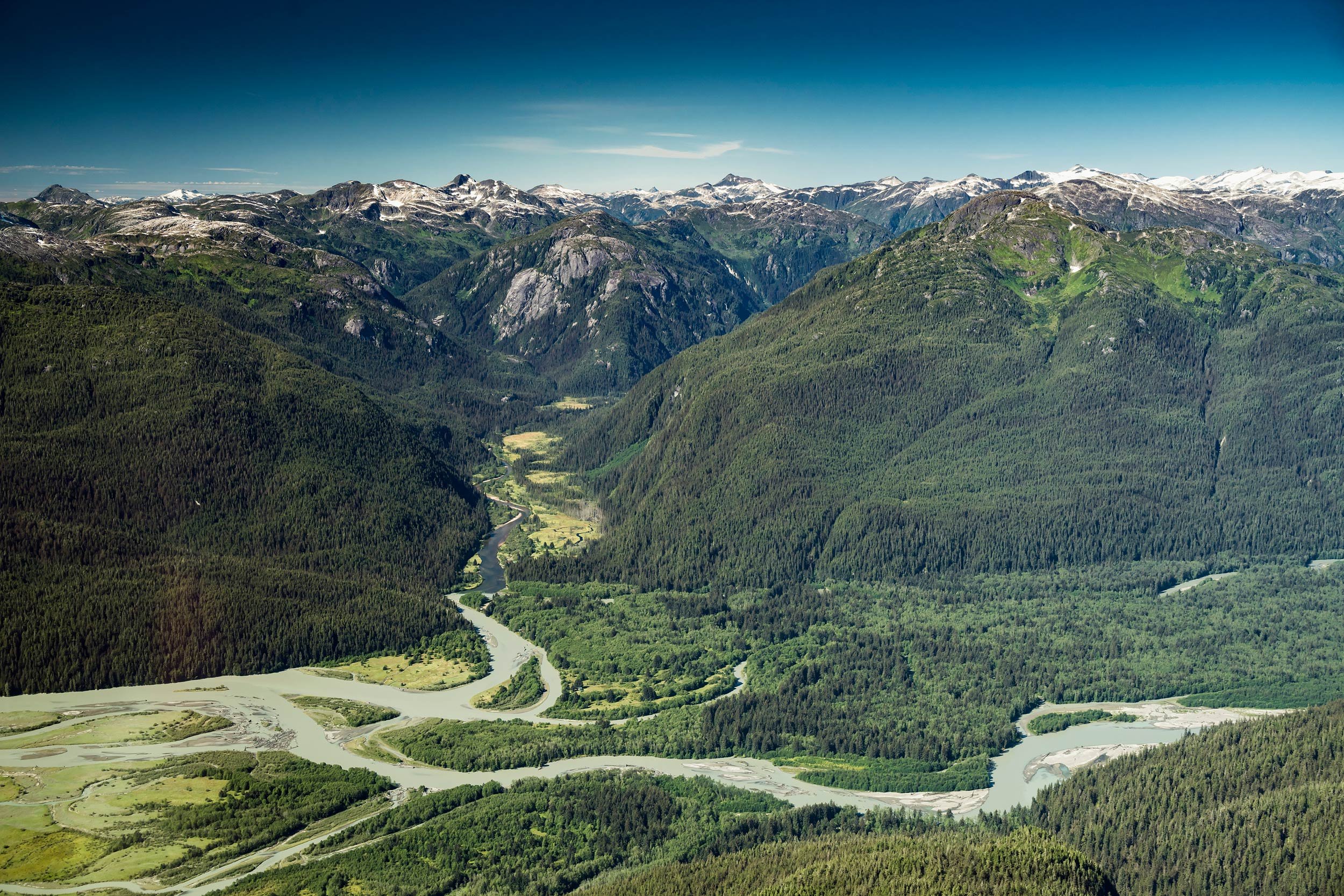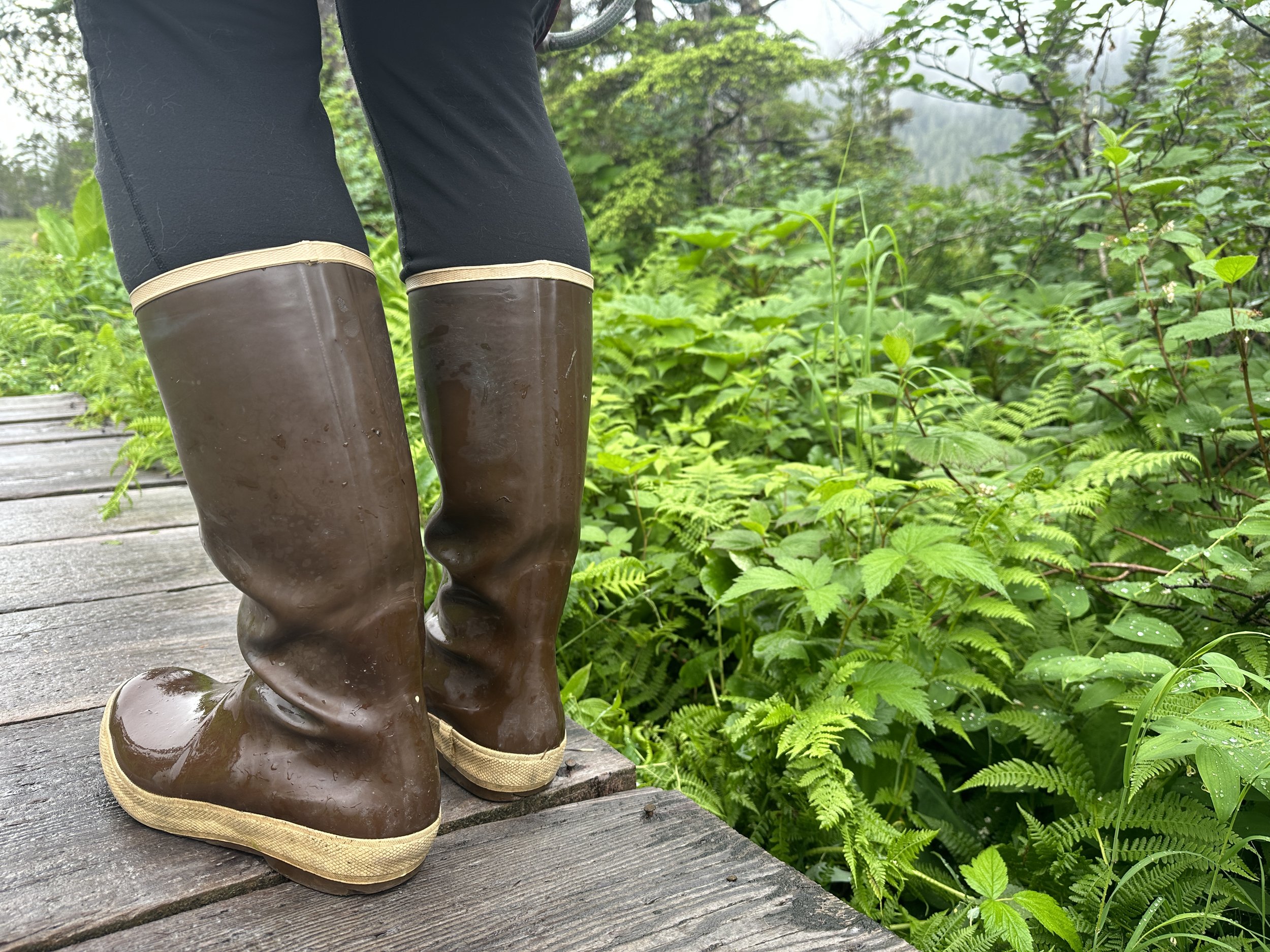
Unuk River
Photo by Chris Miller
Status of B.C. Mining Activity in the Unuk Watershed
Nearly 90% of the B.C. side of the Unuk watershed is staked with Canadian mineral claims, including Seabridge Gold’s massive proposed Kerr-Sulphurets-Mitchell (KSM) gold mine project just 19 miles from the U.S.-Canada border. B.C. is permitting the industrialization of virtually the entire upper Unuk watershed for gold mining: KSM was just named the world’s #1 largest proposed gold mine by resource size (larger than the proposed Pebble mine), and Seabridge Gold’s Snowfield gold project is ranked as the world’s 7th largest gold mine project, and Tudor Gold’s Treaty Creek project is the 10th largest gold project.
For thousands of years, the Tahltan and Tlingit peoples have lived in and stewarded the 1,500 sq mi (3,885 sq km) Joonáx̱ Héeni (Unuk River) watershed. In Lingít, Joonáx̱ translates as “revealed through a dream.” On the B.C. side of the border, the watershed is within the traditional and present-day territory of the Tahltan First Nation. On the Alaska side of the political border, the lower part of the Unuk River watershed is part of the traditional and present-day lands of the Sàanyàa Ḵwáan and the Ketchikan Indian Community, a U.S. federally recognized Tribe.
Brucejack Mine
Operating
Newcrest’s Brucejack underground gold mine and mine waste facility began operations in 2017 and are surrounded by glaciers. In 2021, a massive landslide triggered by the melting Canoe Glacier occurred near the mine camp of hundreds of people.
Photos by Chris Miller

Brucejack Mine
Photo by Chris Miller
Eskay Creek Mine
Proposed revitalization
Skeena Resources proposes to “revitalize” the Eskay Creek gold mine, originally owned and operated by Barrick Gold, to include open pits and mine waste (“tailings”) dams. Eskay Creek entered the provincial Environmental Assessment (EA) process in February 2023. Geophysicist Steve Emerman, Ph.D., lists an Eskay Creek tailings dam as a dam of concern.
Read our official comments on the Eskay Creek Revitalization Project, submitted to the B.C. Environmental Assessment Office in February 2023.
Eskay Creek Mine. Photo by Colin Arisman
Kerr-Sulpherts-Mitchell/KSM Proposed Mine
Developing
Seabridge Gold has been attempting to raise about $6 billion to build KSM. This is because this gold mine project will include open pits, mine waste facilities and twin tunnels drilled under a glacier to a mine waste facility with four earthen dams — 28 times the size of Mount Polley mine’s facility. The Engineer of Record has assigned the highest failure consequence category, “extreme,” to KSM’s mine waste (“tailings”) dams, which means failure is predicted to result in 100+ human deaths. B.C. and Canada granted environmental assessment certificates to KSM in 2014, after denying requests for a more robust Canadian federal “Panel Review” from thousands of Alaskans, Canadians, and the State of Alaska.
Location of the KSM Proposed Mine. Photo by Chris Miller
Premier Gold Mine
Proposed re-opening
Red Mountain Proposed Mine
Developing
Between the Joonáx̱ (Unuk) and Naas (Nass) watersheds are smaller river systems that drain into the transboundary Portland Canal, which is bisected by the U.S.-Canada border. Hyder, Alaska, and Stewart, British Columbia, are located at the head of the Portland Canal, and either side of the international boundary. Ascot Resources’ two proposed gold mines are located on waterways that drain into the transboundary Portland Canal. The Engineer of Record has assigned the mine waste (“tailings”) dams at both Ascot mines a failure consequence category of “Very High” (predicted to result in 10-100 human deaths). B.C. has granted Ascot most permits needed to reopen the Premier Gold mine, less than 20 miles from the border. Ascot’s nearby Red Mountain proposed underground gold mine received its environmental assessment certificates from B.C. and Canada in 2018 and 2019.
Photo of the Unuk River, not specifically the described projects. Photo by Chris Miller
Snowfield Mine Project
Pre-feasibility
Seabridge Gold’s Snowfield gold project is considered the 7th largest gold mine project in the world by resource size and is adjacent to KSM’s Mitchell deposit. Seabridge Gold has begun an updated pre-feasibility study to incorporate Snowfield into KSM’s mine plan.
Snowfield Mine Project. Photo by Chris Miller
Treaty Creek Mine Project
Preliminary economic assessment
Known as the world’s 10th largest gold mine project by resource size, the Treaty Creek mine site borders Seabridge Gold’s KSM to the southwest and Newcrest’s Brucejack mine to the southeast. Treaty Creek is owned by three Canadian junior mining companies, Tudor Gold, American Creek Resources, and Teuton Resources.
Glacier in the Unuk River watershed, not specifically the described project. Photo by Chris Miller
The Unuk watershed is just one of the three transboundary rivers that originates in British Columbia, Canada and flows into Southeast Alaska. These transboundary rivers are staked with mines & mining claims that threaten our rivers, salmon and communities.


